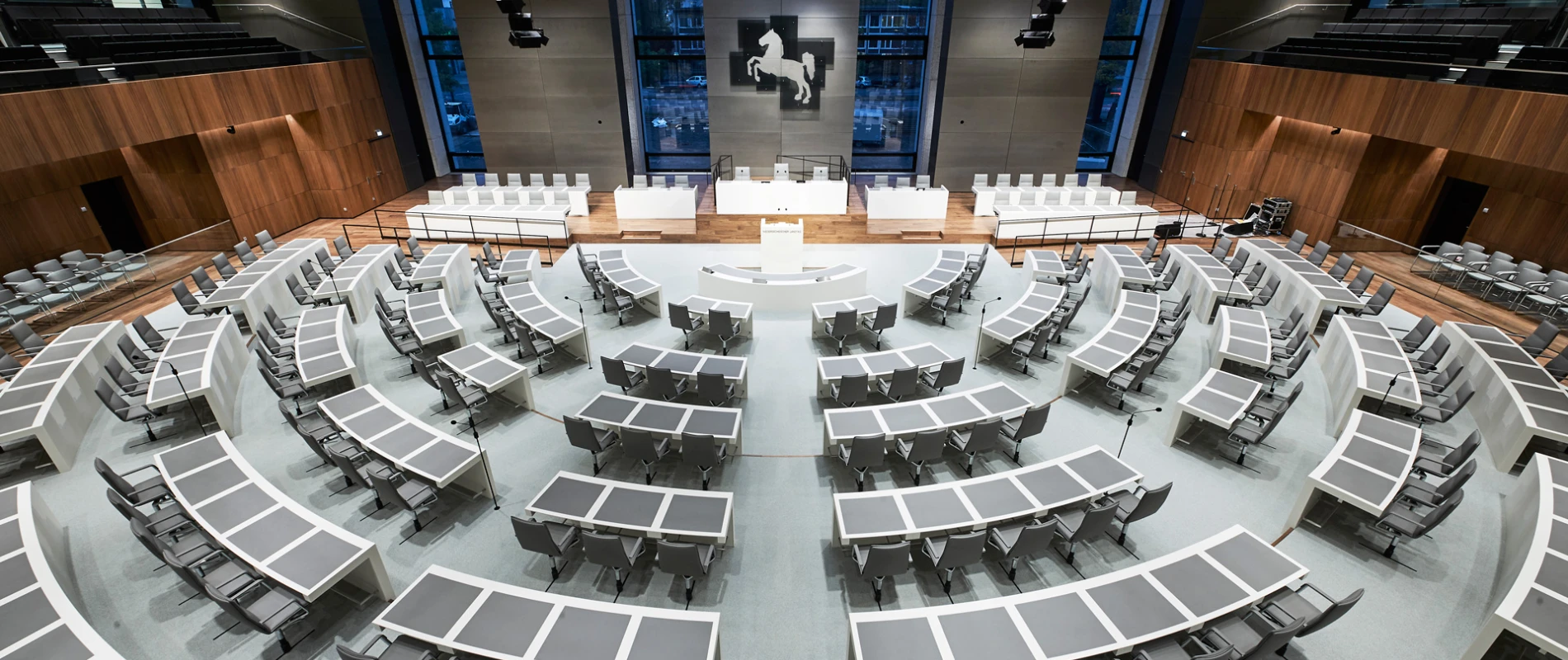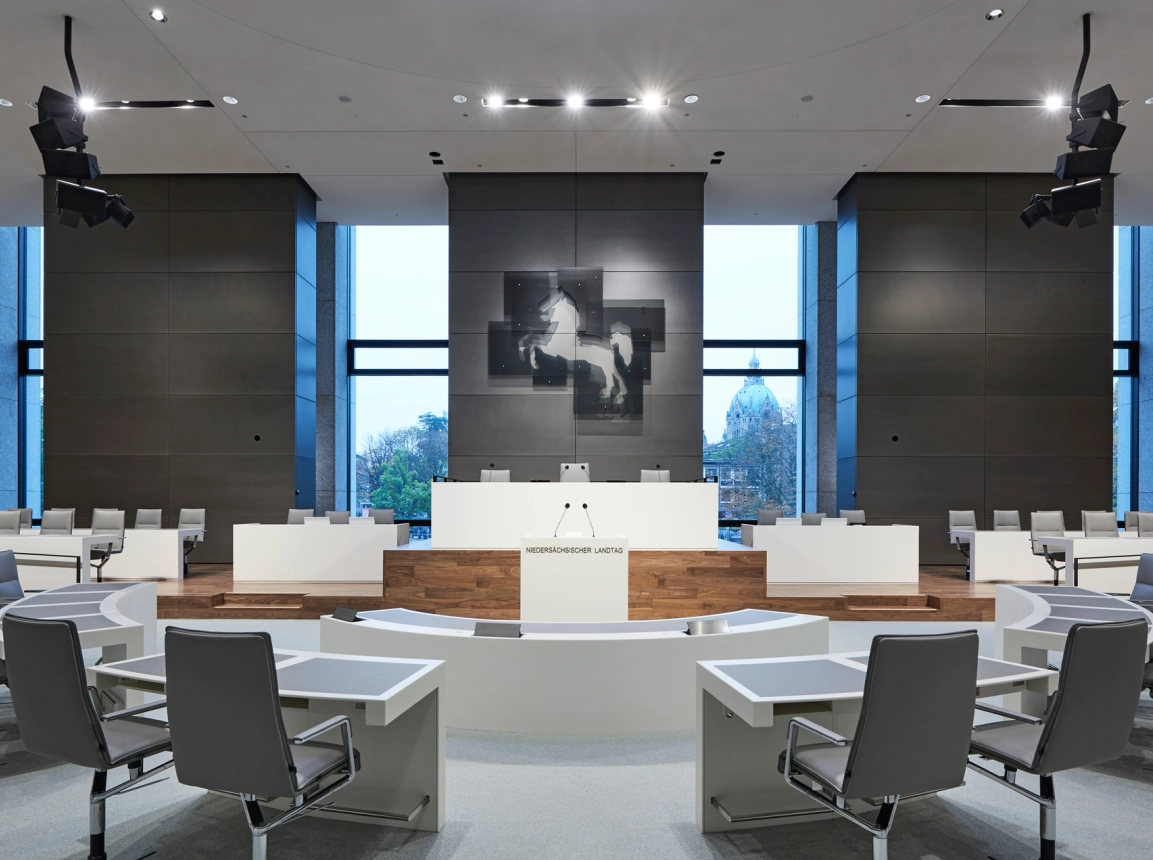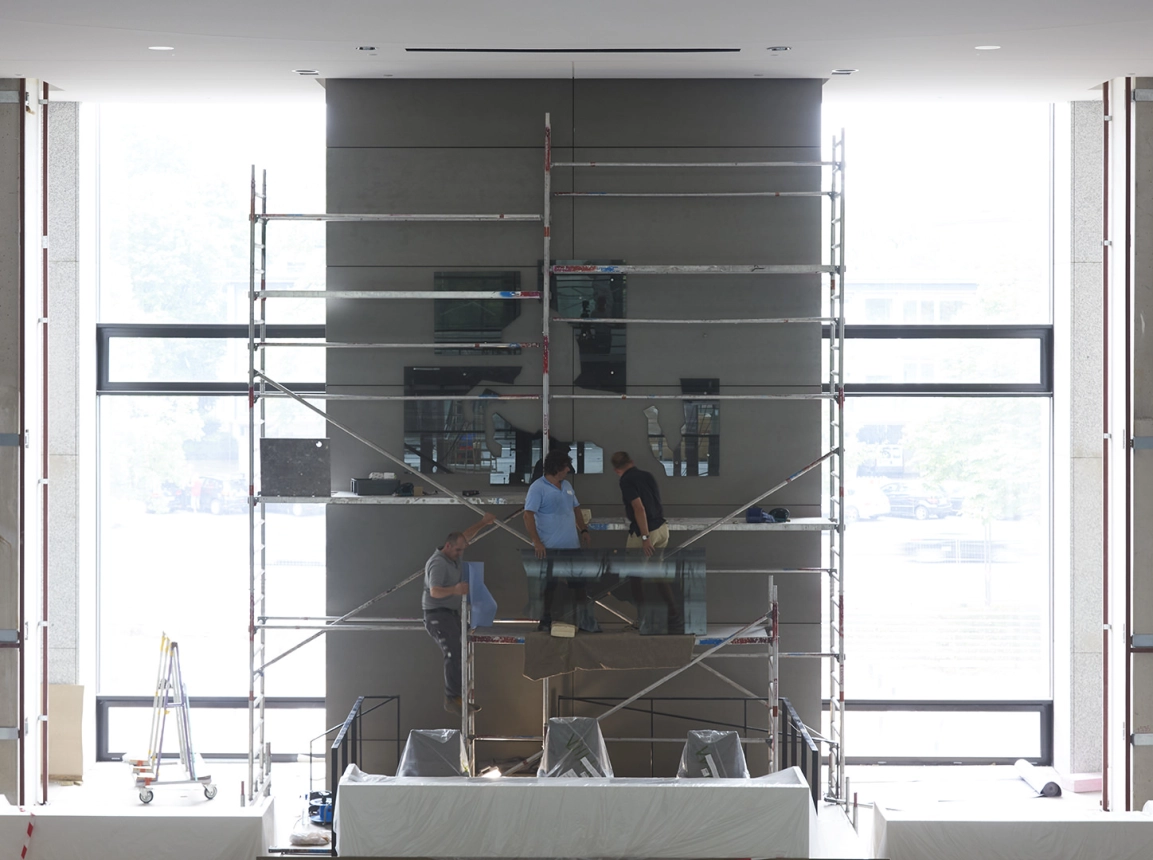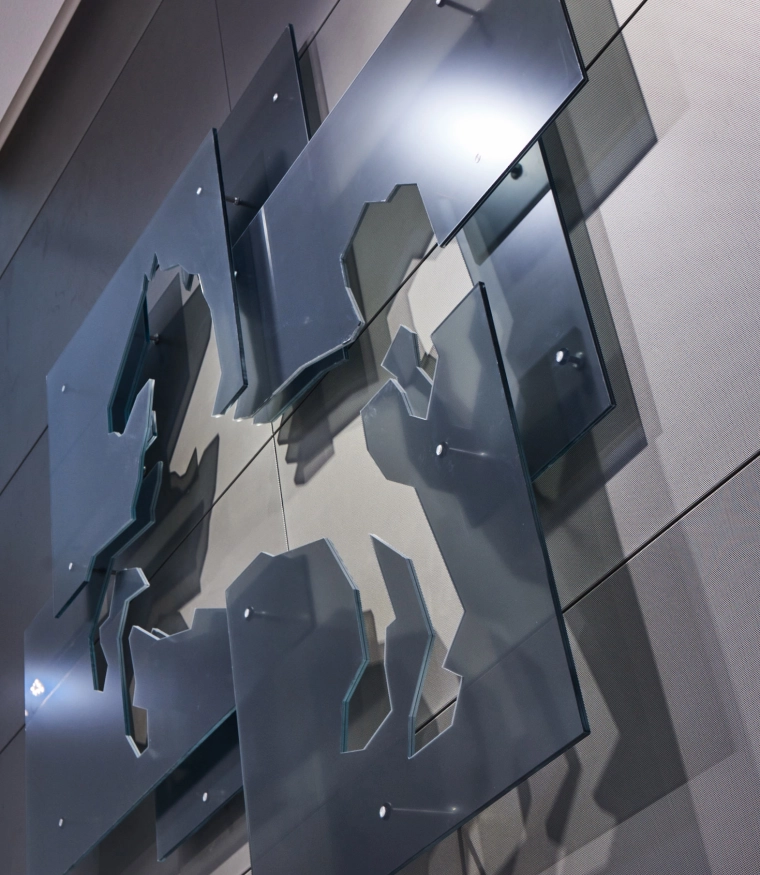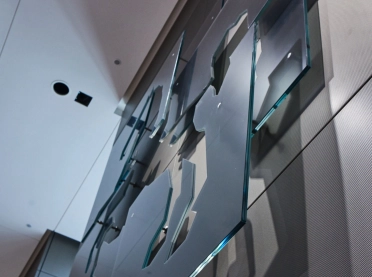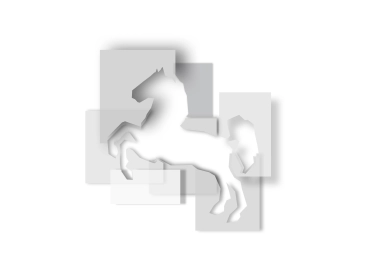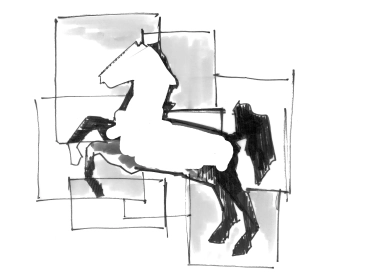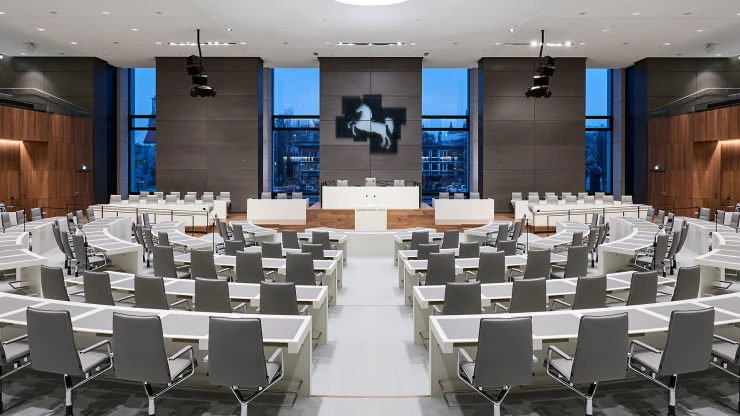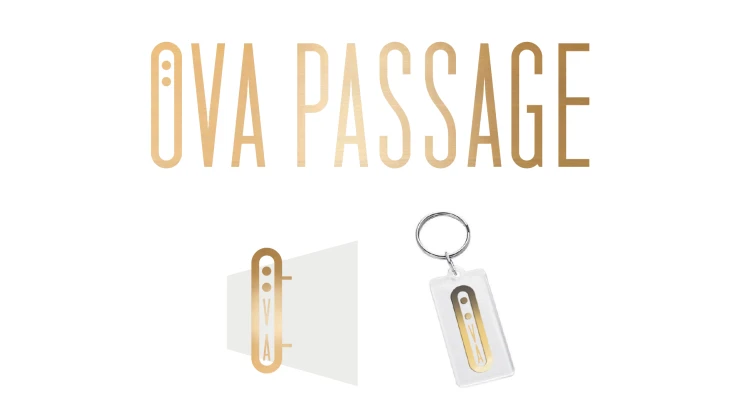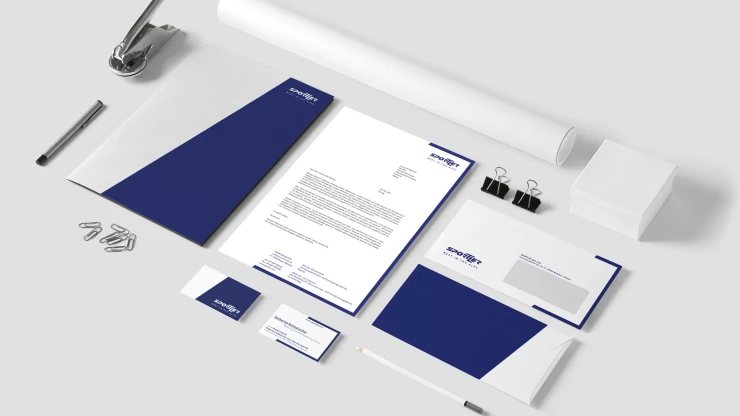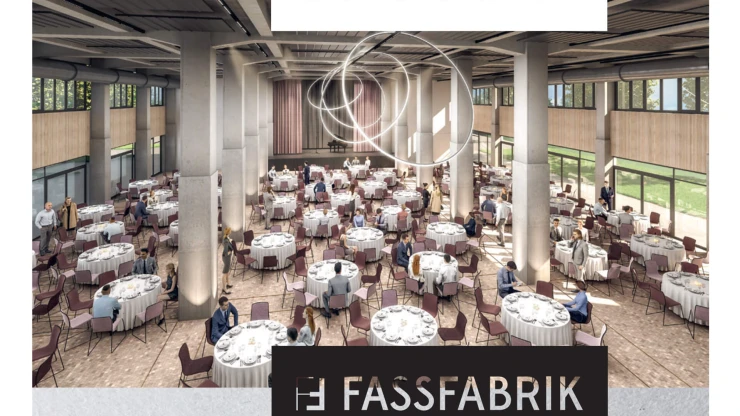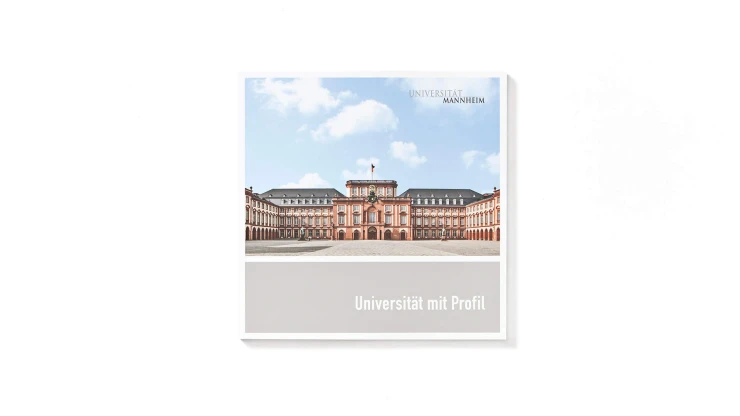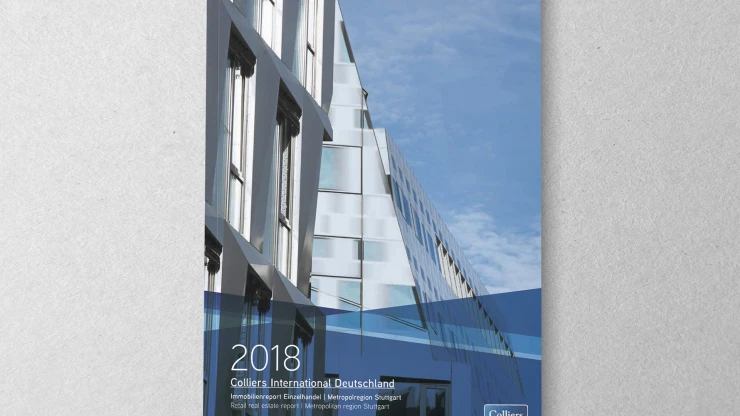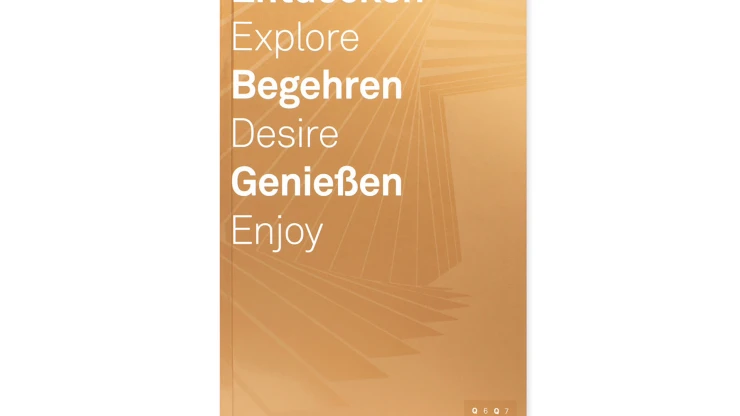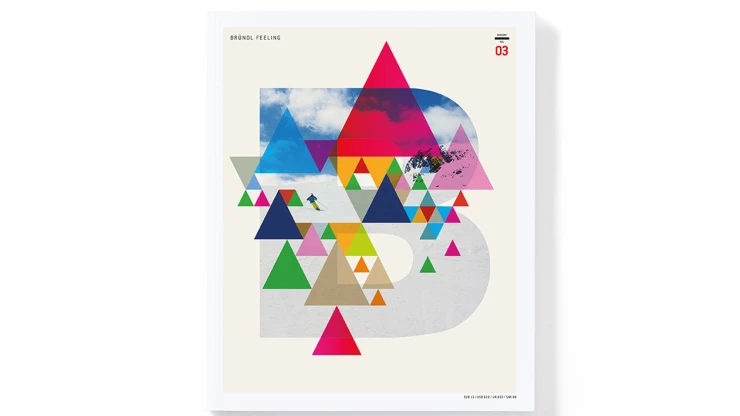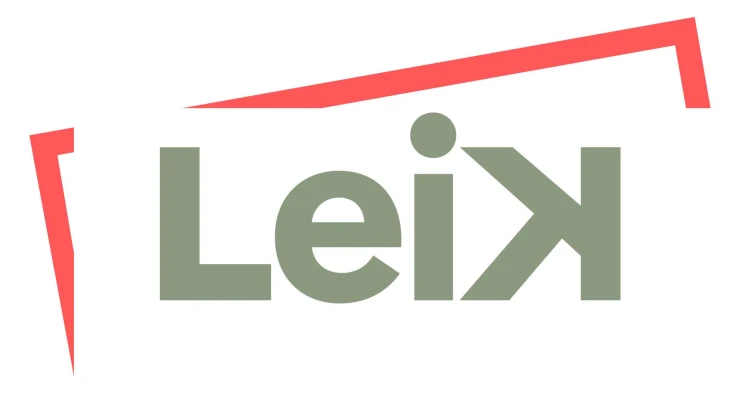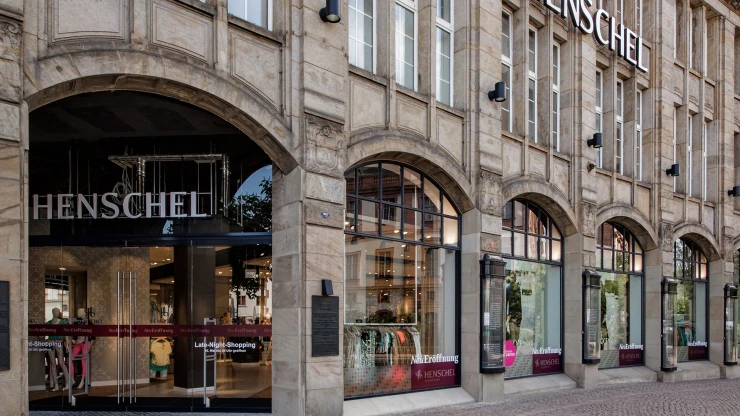Redesign of the State’s coat of arms at the plenar hall — Hannah-Arendt-Platz 1, Hanover, Germany — 13,813 m² — 27 October 2017 — Federal state Lower Saxony
Renewal of the State's coat of arms
The blocher partners architects transformed the landmarked building, designed by Dieter Oesterlen in the postwar period, into a modern parliament building. One important change can be seen on the wall behind the »Landtag« president’s dais: The original sculpted Lower Saxony Steed by Kurt Schwerdtfeger was replaced by a typenraum design: A stylized horse composed of overlapping glass panels now welcomes parliamentarians as well as visitors from all perspectives. This symbol of transparency in politics also forms the outline of the state of Lower Saxony.
With a construction period of just under three years, the new assembly hall of Lowery Saxony’s State Parliament in Hanover was inaugurated on October 27th, 2017. The architects transformed the architectural monument built after the war by Dieter Oesterlen into a modern parliament building. Openness and transparency shape this tall building, which was completely gutted and newly organized on the inside, while the historical outer façade was kept intact. Both the central porticus with a direct view into parliament, as well as the entirely newly constructed assembly hall with its large vertical windows, ensure that there is transparency. Architecture and interior design went hand in hand in order to create a timeless modern parliament building in which people and democracy are at the center.
A symbol for political transparency
Today, the semicircle can hold up to 150 parliamentarians and 261 visitors. It is located directly on the front side and is oriented toward the city where the podium is positioned. It is also exactly here where the State Parliament’s new emblem can be seen – the Lower Saxony steed, which was developed by typenraum in collaboration with the architects.
The designers created a modern abstraction of Lower Saxony’s coat of arms, the history of which reaches back to the 16th century. They created an identity-forming symbol put together with layered translucent glass elements which trace the contour of Lower Saxony on the outside, allowing a stylized steed to emerge on the inside. The horse symbolizes political transparency. It greets parliamentarians and visitors alike, from a visible stance and with multiple perspectives.
